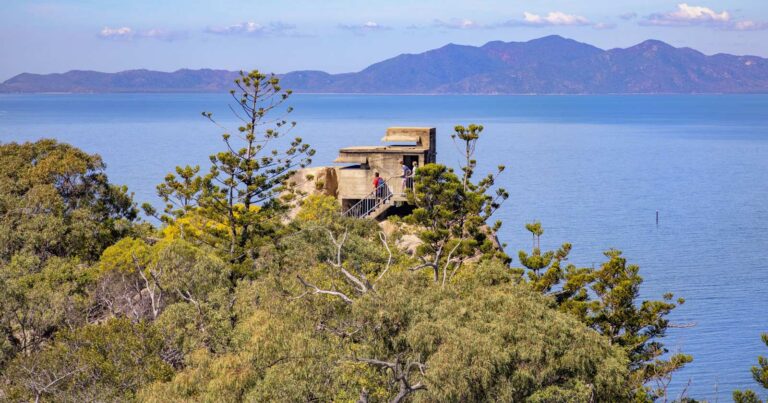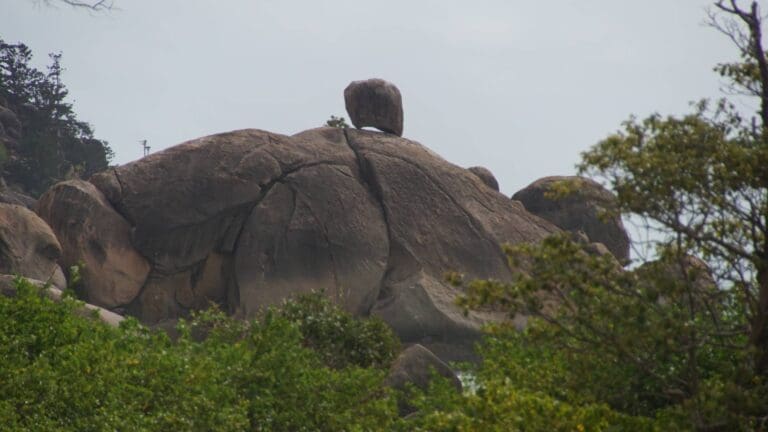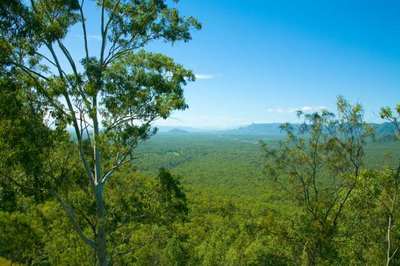Hike at a Glance
Max elevation: 169m
Min elevation: 13m
Total Ascent: 173m
Hike overview
The Forts Walk to Florence Bay is a rewarding 4km trail set within the unique landscape of Magnetic Island National Park in Queensland. Graded as a level 3 hike, it usually takes around 1.5 hours to complete, not including time spent soaking up the scenery or taking a break by the beach. This route brings together two of the island’s most loved experiences: the historic Forts Walk and the inviting shoreline of Florence Bay.
The trail begins with the Forts Walk, a well-known path that offers a blend of nature, history and sweeping views. As you make your way along the track, keep an eye out for koalas dozing in the eucalypts. These encounters are often a highlight for walkers. The path gradually climbs, revealing striking vantage points across the island’s dry, tropical landscape. At the summit, the remains of World War II fortifications come into view. These structures are reminders of the island’s strategic role during the war and are well worth exploring, especially with the panoramic views stretching out in all directions.
From the top of the Forts Circuit, the trail continues down a quieter path leading to Florence Bay. The descent offers a different perspective of the island’s terrain, moving from the rocky ridges to the more sheltered coastal environment. When you reach the bay, you’re greeted by a peaceful, sandy beach flanked by clear water and gentle waves. It’s an ideal spot to cool off with a swim or to try a bit of snorkelling along the fringing reef. The area is known for its marine life, so bring your snorkel gear if you’re keen to explore beneath the surface. If you're just here to relax, the shaded areas near the beach offer a welcome place to rest.
Many hikers choose to complete this walk as an 8km return trip from the Forts Junction, allowing time to explore both the military sites and the natural beauty of the bay. Whether you're interested in the island’s wartime history or just looking for a walk that ends at the beach, this route offers a well-rounded experience that blends storytelling, wildlife and coastal charm in one journey.
Tips
- Take caution: The track connecting Florence Bay to the Forts Walk is quite steep and includes numerous steps, so be prepared for a challenging section.
Gallery
Got some great shots from this hike? Upload your photos here to inspire others and show off the beauty of the trail!
Click to view form >>
Submitting your photos doesn’t mean you lose ownership. You can be credited for your contributions, and you can request removal at any time.
Content use
Please don’t copy GPX files or content from this site to AllTrails or other platforms. Each trail has been personally mapped, documented, and refined to support Australia’s bushwalking and hiking community. While some details come from land managers, every listing reflects significant personal effort. This is a free, community-driven initiative—your respect helps keep it that way.
Walk map and GPX file
Max elevation: 169 m
Min elevation: 13 m
Total climbing: 173 m
Total descent: -234 m
Getting there
Getting to the trailhead: Magnetic Island National Park.
To reach Magnetic Island National Park, take a 20-minute ferry from Townsville, departing near Breakwater Marina. Once on the island, the Forts Walk begins at the Forts Junction, which sits on the main road between Arcadia and Horseshoe Bay. The junction is a central point in the island’s walking trail network and is accessible by car, bus or on foot. While there is a small car park off the sealed access road, spaces fill quickly, especially during peak times, so walking or taking the island bus is often the best option. You can also access the Forts Junction via scenic walking trails: it’s 6.4 km from Nelly Bay, 3 km from Arcadia, or 2.3 km from Horseshoe Bay.
Closest towns to this walk: Arcadia, Geoffrey Bay, Horseshoe Bay, Nelly Bay, Picnic Bay
About the region
Magnetic Island, known traditionally as Yunbenun, is a striking mix of granite headlands, open woodland, and coral-fringed beaches just offshore from Townsville. Once connected to the mainland, it became an island around 7,500 years ago when sea levels rose. Today, about 78% of its 5,184 hectares is protected as national or conservation park, preserving its distinctive natural and cultural heritage.
The island’s vegetation is mostly open eucalypt woodland, with bloodwoods, stringybarks, and ironbarks dominating the landscape. Hoop pines rise from rocky headlands, vine-thickets cluster in gullies, and the coastline is fringed with mangroves, seagrass beds, and coral reefs. These diverse habitats support a wide range of wildlife. Sea turtles nest on sandy beaches, dugongs and green turtles feed in the seagrass, and rock wallabies shelter among the granite tors. Koalas are often spotted in the trees, and the calls of bush stone curlews echo through the woodland.
The Wulgurukaba people, the ‘canoe people,’ have long maintained a deep connection to Yunbenun. Evidence of their presence, including middens, tools, and art sites, can still be found. Since being named by Lieutenant James Cook in 1770, Magnetic Island has had a layered history involving logging, agriculture, wartime defences, and tourism. The World War II fortifications remain among Queensland’s best preserved examples.
The island’s landscape tells a much older story. Around 275 million years ago, granite pushed to the surface and slowly weathered into the dramatic boulders and tors we see today. Fault lines formed gullies and valleys, shaping the island’s rugged topography. Combined with its shallow surrounding seas and rich biodiversity, Magnetic Island offers a unique blend of geology, ecology, and history, making it a compelling destination for hikers and nature lovers alike.
Similar walks nearby
Looking for more walks in or near Magnetic Island National Park? Try these trails with a similar difficulty grade.
Track grade
Grade 3 (Moderate) - Walks for Most Fitness Levels: Grade 3 on the AWTGS represents moderate walking tracks. These are ideal for walkers with some fitness who are comfortable with some hills and uneven terrain. While suitable for most ages, some bushwalking experience is recommended to ensure a safe and enjoyable experience. Tracks may have short, steep hill sections, a rough surface, and many steps. The total distance of a Grade 3 walk can be up to 20 kilometers.
Explore safe
Plan ahead and hike safely! Carry enough water, pack layers for changing conditions, and bring safety gear like a torch, PLB, and reliable communication device. Check official sources for trail updates, closures, and access requirements, and review local weather and bushfire advice. Most importantly, share your plans with someone before you go. Being prepared makes for a safer and more enjoyable hike! Stay Safe, Explore More, and Always #ExploreSafe.
Packing checklists
What you carry in your pack depends on factors like weather, terrain, and your adventure type. Not sure what to bring? My free planning, food, and packing checklists are a great starting point, covering day hikes, overnight trips, and multi-day adventures. Use them to customise your kit and always prioritise safety.
Let someone know
Before heading out, take a moment to fill out your trip intentions form. It’s a quick way to share your hike details with family or friends. If something goes wrong, they can notify emergency services, ensuring a faster response and peace of mind. Stay safe and enjoy your adventure
Suggest an edit
Spotted a change on this trail? Maybe there are new features, the route has shifted, or the trail is permanently closed. Whatever the update, I’d love your input. Your feedback helps fellow hikers stay informed and ensures that our trail info stays fresh and reliable.
Acknowledgement of Country
Trail Hiking Australia acknowledges the Traditional Owners of the lands on which we hike and pay respects to their Elders, past and present, and we acknowledge the First Nations people of other communities who may be here today.






